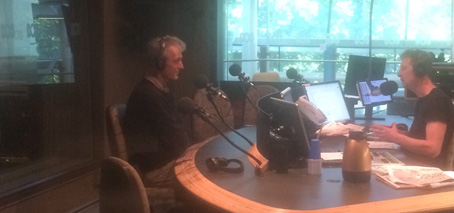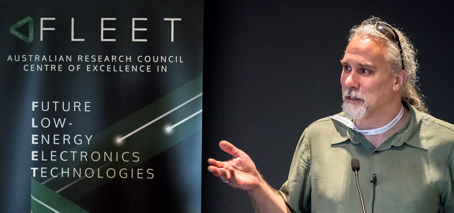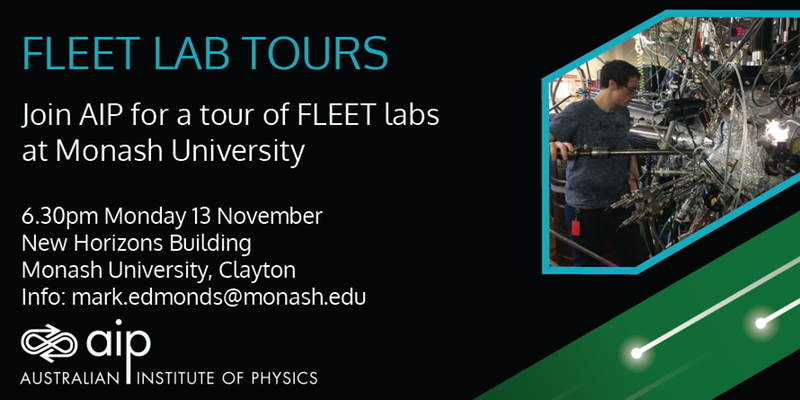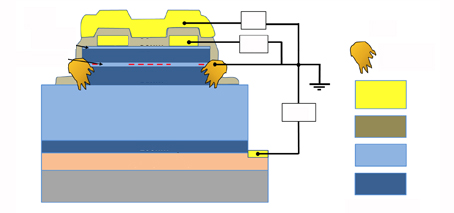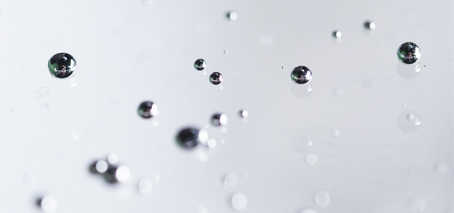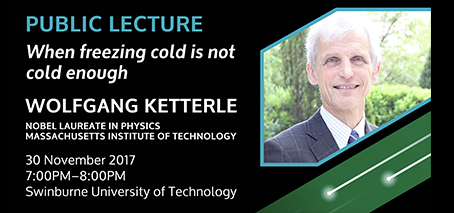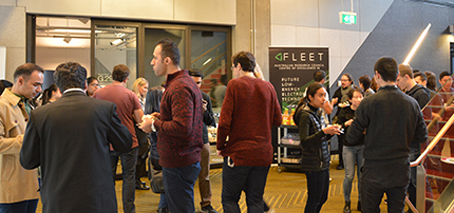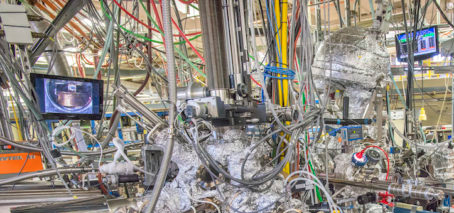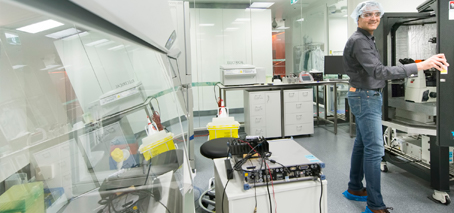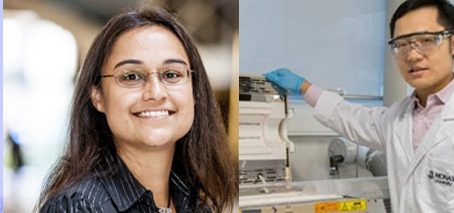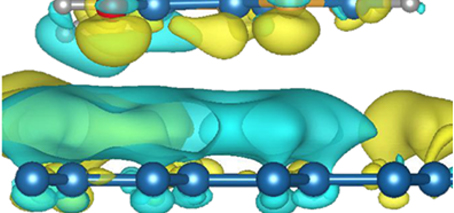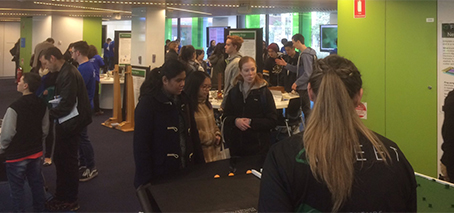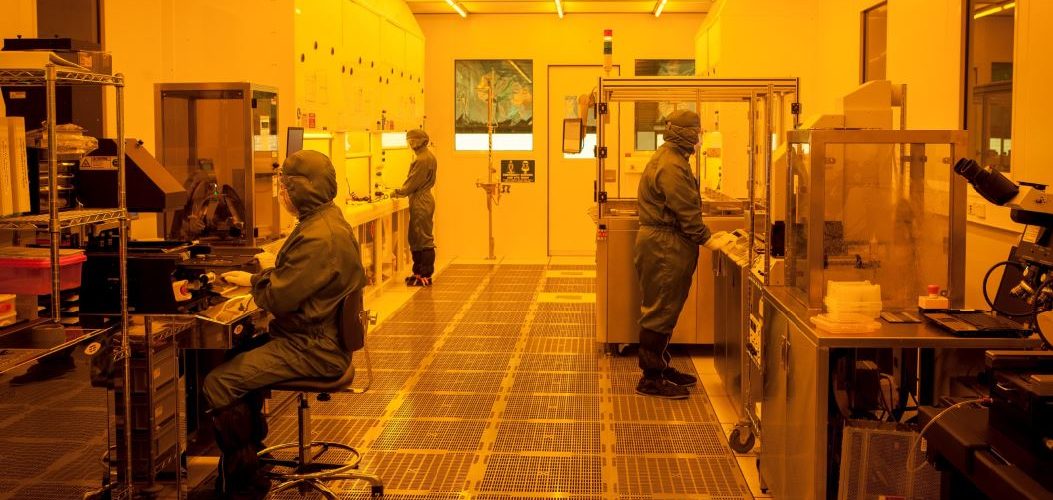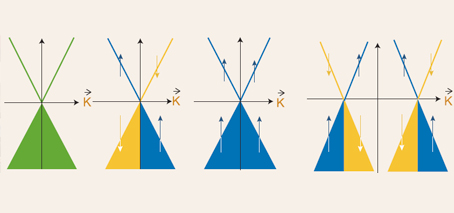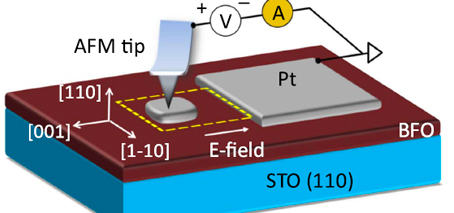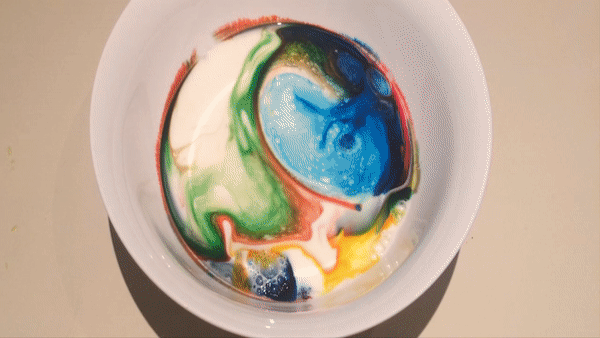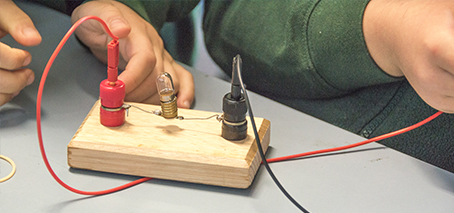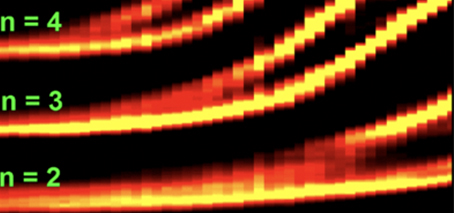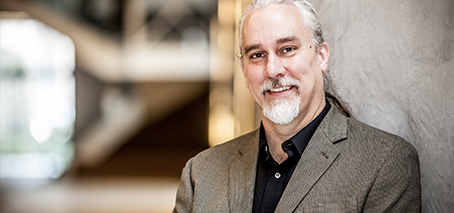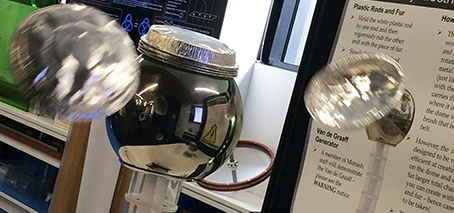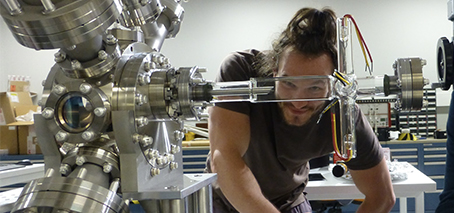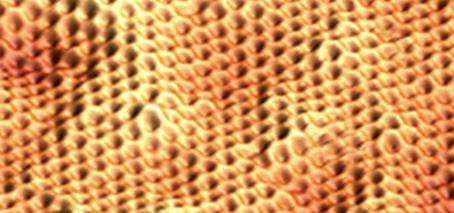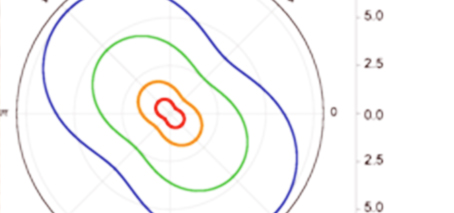“That’s not right!” Well, yes, it is. Prof Wolfgang Ketterle, in Australia with FLEET, teaches ABC Radio Melbourne’s Red Symons a thing or two about states of matter. In particular, Bose Einstein condensates. Listen below. Ketterle, in town for FLEET’s inaugural annual workshop in Torquay, is visiting the ultra-cold atomic labs at Swinburne today, where FLEET researchers use Bose-Einstein condensates …
FLEET inaugural annual workshop in Torquay: computing a solution to the ‘hidden’ energy challenge
How much energy do you burn using the internet? It’s more than you think. While a smartphone or home PC itself doesn’t burn too much energy, a tremendous amount of electricity is consumed in the massive data centres that keep us all connected via the net. Over a hundred physicists meeting in Torquay this week may have the solution. The …
FLEET researchers get a $4.6m boost in ARC funding round
This month’s ARC funding round saw FLEET research and researchers across five universities awarded additional funding. Across eight separate grants, almost $4.6m new research funding went to projects and facilities led by or involving FLEET researchers or directly contributing to FLEET’s search to develop ultra-low energy electronics and boost related areas of research. Two projects in particular will be key …
FLEET hosts physicists tour at Monash
FLEET’s Monash labs recently hosted a tour by members of the Victorian branch of the Australian Institute of Physics, the country’s leading body for physics advocacy and support. The tour included the experimental laboratories of FLEET Chief Investigators Michael Fuhrer, Agustin Schiffrin, Kris Helmerson and Qiaoliang Bao. Members saw where: Michael Fuhrer grows atomically-thin (2D) materials in the lab using …
Current-carrying holes confined to one-dimension show unique spin in UNSW study
UNSW researchers solve a 10-year-old mystery in the way nanoscale transistors work. Half of all the transistors in your iPhone use positively-charged ‘holes’, rather than negatively-charged electrons to operate. At university, we teach undergraduates that holes are quasiparticles, basically ‘missing electrons’ – a bit like the bubble in a spirit level, or the missing chair in a game of musical …
Liquid metal provides ‘once-in-a-decade’ advance in 2D material deposition
A variety of methods exist to deposit atomically-thin (two-dimensional) crystals. But large-scale deposition has remained a challenge. However a recent RMIT-led study has found success with a new technique with potential to open new doors for two-dimensional semiconductors. The discovery has been described as a ‘once-in-a-decade’ advance. The new technique introduces room-temperature liquid metals (gallium-based) as a successful reaction environment …
When freezing cold isn’t cold enough, and lunch with a laureate
Public talk 30 November All are welcome to a public talk at Swinburne University of Technology (Hawthorn) at 7PM on Thursday 30 November. Prof Ketterle will discuss Bose-Einstein condensates, in which atoms are cooled to temperatures a billion times colder than outer space, and matter behaves as a wave, “marching in quantum lockstep”. These forms of ultra-low temperature matter, …
Got a PhD? What’s next?
Where can your PhD take you? And how can you maximise your potential future? A group of STEM PhDs and higher degree researchers heard about career options post-PhD at a forum last month, run by FLEET at Monash University. The assembled panel of academics, entrepreneurs, business development and research managers shared their own diverse career journeys and top tips on …
Studying electronic structure on Berkeley beamlines
FLEET’s mission to create ultra-low energy electronics depends on an improved fundamental understanding of the electronic structure of atomically-thin, two-dimensional materials. We need to understand how electrons in the material interact with each other and also how they move and scatter through the crystal lattice. FLEET researchers using the vacuum ultraviolet the UV beamline 10.0.1 (HERS) at the Advanced Light …
Ingestible smart pill recognised
Kourosh Kalantar-zadeh’s ingestible smart pill could revolutionise prevention and diagnosis of gut disorders/disease, and make a significant difference to the health of as many as one in five Australians who suffer gut disorders. This month the technology won the prestigious 2017 IEEE Sensors Council achievement award in the field of sensors. Read more at RMIT. At RMIT,Prof Kalantar-zadeh is Director …
Michael Fuhrer talks low-energy electronics on Radio 3RRR
FLEET Director Michael Fuhrer spoke today with science show Einstein a gogo on 3RRR about energy use in information and communications technology (ICT), limits to our ability to squeeze more efficiency out of traditional silicon-based technologies, and the alternatives that FLEET is pursuing, including topological materials and atomically-thin materials. Listen
Two-dimensional materials key to solving ‘invisible’ computing energy challenge
From Monash University Insider (staff only) While a smartphone or home PC itself doesn’t burn too much energy, a tremendous amount of electricity is consumed in the massive data centres (or ‘server farms’) that keep us all connected via the net. A new, ARC-funded research centre aims to address the growing computing energy challenge using materials that are just one …
Study points to better graphene-based biosensors
There is considerable excitement about graphene-based biosensors. In particular, the material’s unique structure and electronic properties offers great potential for rapid, reliable DNA/RNA sensing and sequencing. To date, this potential has been checked by a lack of fundamental understanding of graphene−nucleobase interactions and the origin of measured molecular fingerprints. A recent study has defined key interactions as DNA/RNA nucleobases are …
Monash Open Day introduces FLEET to students and public
Monash University’s recent open day provided a great opportunity to explain FLEET to a large audience. The FLEET zone in the School of Physics and Astronomy area allowed for hands-on demonstrations, while lab tours provided a closer look at the research and FLEET director Michael Fuhrer presented a talk on the big picture challenges of energy use in global computing. …
Materials one atom thick & nanotransistors: FLEET features in nano edition
FLEET features in this month’s annual ‘nano’ edition of the Australian Manufacturing Tech magazine. The article looks at growth of atomically thin and other novel materials and nanofabrication, with a particular focus on partnerships. Atomically thin material projects presented include semiconductor fabrication at RMIT University (Lan Wang) and the University of Wollongong (Xiaoliang Wang) and molecular beam epitaxy (Mark Edmonds …
Light-matter research recognised
FLEET research has been highlighted at an important conference in Würzburg, Germany. Eli Estrecho, a PhD student in Elena Ostrovskaya’s group at ANU, won the 1st “Gold” award (and €500) for the best poster presentation entitled ‘Single-shot imaging of exciton-polariton condensates’ and David Colas, a Postdoctoral Fellow in Matt Davis’ group won one of the 3rd “Bronze” prizes for his poster …
Spin gapless semiconductors: promising materials for novel spintronics and dissipationless current flow
A University of Wollongong study has tightened the search for materials that would allow for ultra-fast, ultra-low energy ‘spintronic‘ electronics with no wasted dissipation of energy from electrical conduction. Spintronics is an emerging field of electronic study in which the ‘spin’ of electrons (their intrinsic angular momentum) is used in addition to their charge. Conventional electronics and information technology are …
‘Agile’ circuits: new study a step towards ferroelectric domain wall nanoelectronics
A UNSW study published last Friday presents an exciting step towards a novel form of electronics based on nano-scale, ‘disappearing’ conduction paths that could allow for extremely dense memory storage. It’s based on domain walls, which are atomically sharp topological defects separating regions of uniform polarisation in ferroelectric materials. The domain walls are electrically conductive, while the surrounding of the wall …
Launching home science activities
FLEET aims to make science more accessible to the wider community, and to bring science to kids who will become Australia’s future great scientists and engineers. So today, we’re launching a new program of home science activities for kids. FLEET will provide ideas for fun science activities and experiments that are easy to do in the home. Our first three …
Universality of the unitary Fermi gas
A recent Monash University study has investigated Fermi gases with only a small number of interacting particles, and has used that simplified case to predict some behaviours within Fermi gases with many more particles. The study was published in Journal of Physics B: Atomic, Molecular and Optical Physics, March 2017 FLEET’s Meera Parish is investigating how robust excitonic superfluidity is …
FLEET school visit examines electricity and electrons
FLEET’s Senior Education & Training Coordinator visited a primary school to speak to Grade 2 students about electricity and electrons. Students were challenged to make a light bulb light up using a battery and some wires, and to find materials that could act as conductors. The students have been studying about materials and technology this term, so the topics fit …
FLEET is hiring
FLEET is seeking 16 talented postdoctoral scientists with backgrounds in Physics, Materials Science, Chemistry, Nanotechnology, Electronic Engineering and other equivalent fields. Research fellowships are available for talented postdoctoral scientists, offered at six FLEET nodes: Monash University, the University of New South Wales, RMIT University, Swinburne University of Technology, the Australian National University and the University of Wollongong. Work with us …
Investigating spin-orbit coupling in semiconductors
Spin-orbit interaction (SOI), is the interplay between electrons’ inherent angular momentum (their quantum spin) and their orbit around an atom’s nucleus. This interaction is key to the function of topological materials, which are studied at FLEET for their potential to form ultra-low resistance pathways for electrical current. A recent study investigated the relationship between spin-orbit interactions in gallium arsenide quantum …
Room-temperature ferromagnetic semiconductor strong foundation for spintronics
A barrier to practical spintronic devices has been lowered as room-temperature ferromagnetic semiconductors created in an international collaboration involving FLEET’s Xiaolin Wang. While semiconductor spintronics promise lower switching energy and faster speed, a major limitation on its development as a viable technology is the lack of room temperature ferromagnetic semiconductor materials. A collaborative study between researchers from two Chinese universities …
FLEET Director on National Science Quiz panel
The National Science Quiz will be held in Melbourne on Sunday 18 June at 3pm. FLEET Director, Professor Michael Fuhrer, will be one of the scientists on the panel for this event. With live demonstrations and curiosity-provoking questions, the National Science Quiz is ninety minutes of science, maths, and laughs that promises fun for the whole family. #NatSciQuiz2017 Secure your …
First FLEET school visit next week
FLEET staff will be visiting a primary school next week to talk to Grade 2 students about energy, electricity and technology. With the use of a van de Graaff generator, it’ll be a hair-raising experience! FLEET has a commitment to bringing science and research to the wider community. FLEET staff are currently developing a range of resources that can be …
Peering into the future with bigger Bose-Einstein condensates
A next-generation Bose-Einstein condensate apparatus being built at Monash University will allow bigger Bose-Einstein condensates to be created, and allow even higher resolution imaging of them. Researchers will also have better optical access to be able to manipulate the atoms within the condensate more precisely. The equipment will allow researchers to study non-equilibrium dynamics and quantum turbulence. FLEET Chief Investigator …
Band alignment at semiconductor junction looking good for low-resistance contacts
The future of ultra-low resistance semiconductor junctions in novel low-energy electronics is looking good after a recent study took a very close look at band alignment. FLEET is using two-dimensional materials in the search for new electronics devices that will carry electrical current without losing the significant energy dissipated in current, silicon technology. The new electronic devices developed at FLEET …
New spin-orbit coupling analysis agrees with experiment
A study by FLEET’s UNSW researchers looked at spin-orbit interaction at the two-dimensional interface between common semiconductor materials. A new semi-analytical method was developed for analysis. Spin-orbit interaction (SOI), is the interplay between electrons’ inherent angular momentum (their quantum spin) and their orbit around an atom’s nucleus. This interaction is key to the function of topological materials, which are studied …

